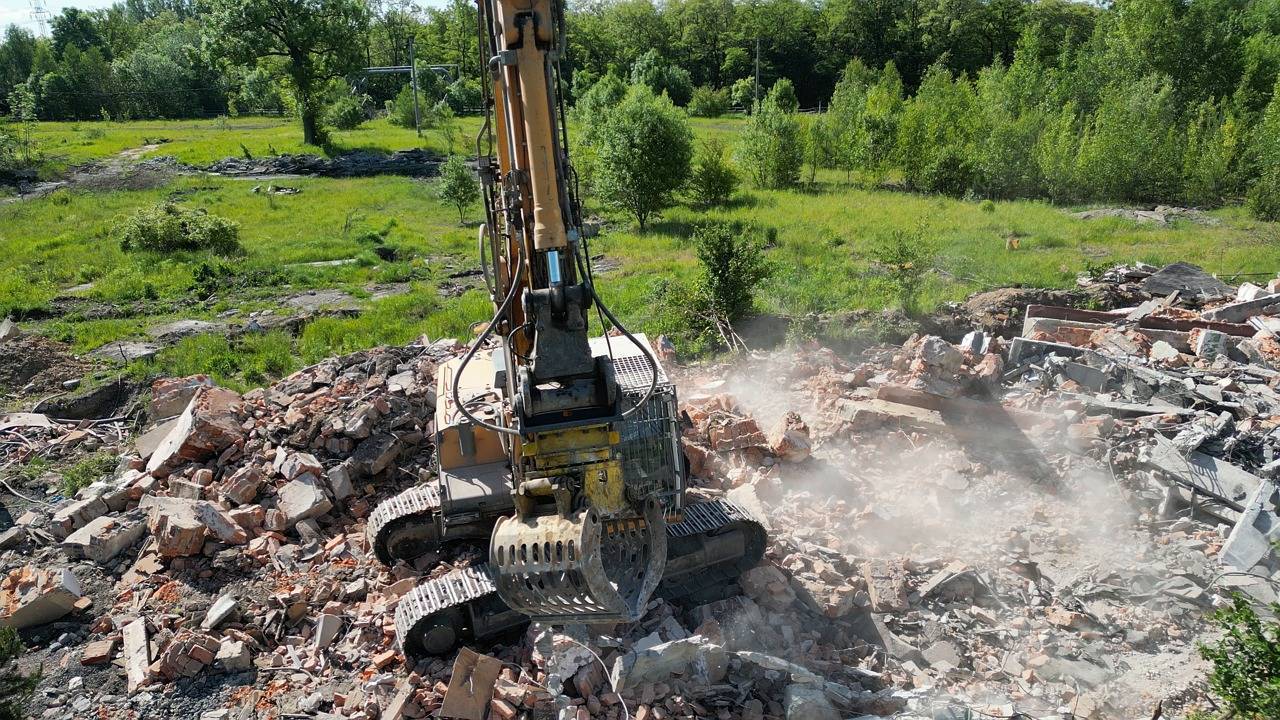The Indian real estate sector is poised for significant growth in 2024, continuing the upward trajectory observed in the previous year. The momentum gained from an economic rebound and increased investor confidence has set the stage for innovative trends that are reshaping the industry. Here, we explore the key real estate trends expected to dominate the Indian market in 2024.
1. Expansion of Shop-cum-Offices (SCO)
Shop-cum-offices are increasingly popular in the Indian commercial real estate market, particularly in burgeoning urban areas such as Gurugram. These hybrid spaces offer the versatility of being usable both as retail shops and office spaces, which is particularly attractive in areas with high commercial activity. Investors are drawn to SCOs due to their potential for high rental yields and longer lease terms, which provide a steady income stream and relatively lower turnover costs compared to traditional retail spaces.
The rise of SCOs represents a shift toward more flexible commercial environments. Developers are increasingly planning mixed-use developments that can adapt to the changing needs of businesses and consumers alike. Moreover, the success of SCOs in cities like Gurugram is prompting developers to replicate this model in other urban centers, thus expanding investment opportunities across India.
According to a report by Knight Frank, the demand for SCOs in cities like Gurugram surged by 25% in 2023, with rental yields averaging around 8-10%. This has led to an increase in investment in mixed-use developments, with an estimated growth of 15-20% in such projects across major urban centers in India by 2024.
2. Digital Transformation in Real Estate Transactions
The transition to digital platforms has revolutionized the real estate industry by making transactions more accessible, faster, and more transparent. Potential homebuyers can now tour properties virtually, apply for mortgages online, and complete nearly all aspects of the purchasing process without ever leaving their homes. This shift has not only streamlined operations but also broadened the market by enabling remote and international investors to participate more actively.
Moreover, the integration of artificial intelligence and machine learning technologies is enhancing the customization of property searches, based on individual preferences and historical data. This not only improves user experience but also increases the efficiency of matching buyers with the right properties, further fueling the growth of the market.
According to a report by KPMG, digital transactions in real estate are expected to reach $350 billion by 2025, and India is set to be a significant contributor.
3. Emergence of Sellers' Market Dynamics
2024 is characterized by a strong sellers' market, largely due to limited housing inventories and robust demand. This market condition is particularly prevalent in urban areas where the pace of new construction is not keeping up with the rate of demand. With more buyers than available properties, home prices are naturally driven up, benefiting sellers and creating a competitive marketplace.
This sellers' market is also impacting the strategies of developers and real estate agents, who are now focusing on creating more targeted marketing campaigns and leveraging advanced data analytics to better understand market dynamics and buyer behaviors. Such insights help in pricing strategies and inventory management, ensuring maximum profitability and market share growth.
The average property prices in key urban areas have seen a year-on-year increase of 8-10%, according to data from property consultancy firm ANAROCK. Furthermore, the sales-to-listings ratio in cities like Mumbai and Bangalore has reached as high as 85%, highlighting the strong sellers' market prevailing in these regions.
4. Price Inflation and Rising Interest Rates
The end of historically low interest rates is coinciding with a general increase in property prices, influenced by both domestic and global economic factors. Inflationary pressures and tightening monetary policies are leading to higher mortgage rates, which could cool some of the fervor in the housing market by making borrowing more expensive.
However, despite the potential dampening effect of higher interest rates, the underlying demand for housing remains strong, driven by an expanding middle class and increasing urbanization. Developers are responding by focusing on more affordable housing projects and seeking innovative financing solutions to attract buyers who may be daunted by rising costs.
The Reserve Bank of India (RBI) has projected a 1.5-2% increase in mortgage rates by the end of 2024, citing inflationary pressures and the need to curb asset bubbles. This is expected to moderate the growth in property prices, with analysts predicting a 5-7% increase compared to the double-digit growth observed in previous years.
5. Shift Toward Tier-II and Tier-III Cities
The focus of real estate development is increasingly shifting towards Tier-II and Tier-IV cities, driven by several compelling factors. First, the cost of living and property prices in these regions are considerably lower than in metro cities, making them attractive to both investors and end-users. Additionally, the growth of infrastructure projects like AMRUT and Smart Cities Mission has greatly improved the quality of life in these cities, making them viable alternatives to their larger counterparts.
The presence of major Indian and global MNCs in these cities, coupled with improved connectivity to metropolitan areas, has also boosted their residential appeal. These cities are experiencing an influx of professionals looking for a better balance between lifestyle and cost of living, which is spurring residential and commercial development. Furthermore, the rise in local job opportunities is reducing the need for daily commuting to bigger cities, thereby fostering a self-sustaining urban ecosystem.
According to the Financial Express report, with a staggering housing demand of 93 million units forecasted by 2036, developers are increasingly turning their attention to tier 2 and tier 3 cities. Notable regions such as Chandigarh Tricity, Agra, Lucknow, Ujjain, Vrindavan and Hapur, among others, have emerged as focal points. Almost 91.6 per cent of the acquired land is earmarked for low-rise and plotted formats, reflecting the huge unmet demand for affordable housing.
6. Increased Interest in Homeownership Among Young and First-Time Buyers
A significant trend in 2024 is the increasing number of young and first-time homebuyers entering the market. Empowered by digital tools that simplify the buying process and more accessible financing options, these buyers are more confident in navigating the real estate landscape. This demographic shift is prompting developers to offer properties that cater to the needs and preferences of younger buyers, including smart home technologies, green living features, and community-centric amenities.
This surge in young buyers is also influencing the types of properties that are in demand, with a noticeable preference for smaller, more affordable homes in well-connected urban and suburban areas. Developers are responding by adjusting their portfolios to include more of these types of properties, which promise to be a growing segment of the market in the coming years.
The share of first-time homebuyers in India has increased from 30% to 45% in the last two years, as per data from HDFC Ltd. Furthermore, the average age of homebuyers has dropped from 35 to 30 years, indicating a growing preference among young adults for property ownership.
7. Growth in Office Leasing and Commercial Investments
The commercial real estate sector is seeing robust growth, particularly in office leasing, driven by the expanding IT and retail sectors. As businesses grow and new companies are founded, the demand for office space continues to rise. This is particularly true in cities that are becoming hubs for technology and e-commerce companies.
Moreover, the logistics sector is also expanding rapidly, fueled by the growth in e-commerce. This has increased the demand for large-scale warehousing and distribution centers, which are becoming vital components of the commercial real estate market. Additionally, the burgeoning data center market is witnessing significant investment, driven by the increasing need for data processing and storage facilities to support the digital economy.
As per JLL report, gross office leasing activity reached an impressive 15.16 million sq. ft in Q1 2024, an increase of ~13.8% compared to the same period last year. This marks the third consecutive quarter where gross leasing has surpassed the 15 million sq. ft mark, following the historical high of 20.94 million sq. ft in Q4 2023 and 16.03 million sq. ft in Q3 2023.
Commercial real estate investments in India is booming, and its market size, which is currently estimated to be USD 40.71 billion (2024), is expected to grow at a CAGR of 21.10% and reach USD 106.05 billion by 2029, as per a report by Mordor Intelligence.
Conclusion
The landscape of the Indian real estate market in 2024 is dynamic and filled with opportunities for savvy investors and homebuyers. The trends highlighted above not only indicate a robust market outlook but also suggest a shift towards more sophisticated and diversified real estate offerings. As the market continues to evolve, staying informed and agile will be key to capitalizing on the potential of India's vibrant real estate sector.
Image source- macpas.com









.png)